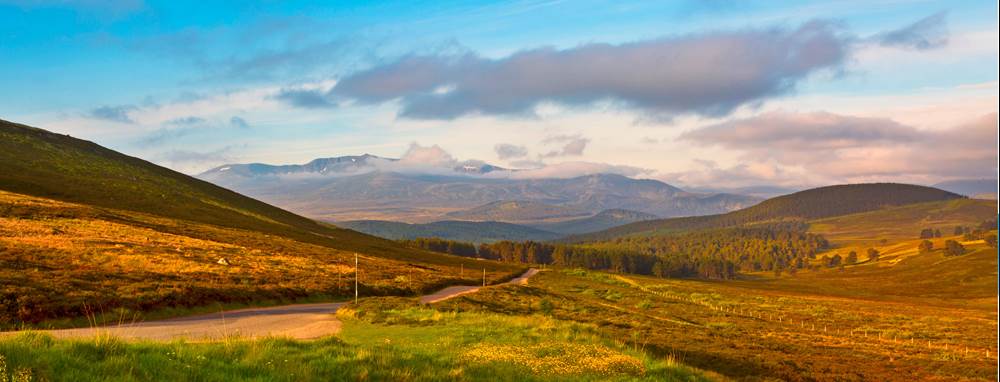
Lochnagar from above Crathes - why it's John MacRae's favourite view
This year, the ASPC calendar consists of a unique collection of images which represent personal significance for people in the North East. Every month, we’ll take a look at the reason why that month’s view is so special and highlight the beautiful photograph by photographer Ray Smith.
In May, the scene is a view of Lochnagar from above Crathie, which is my own choice of contribution to the calendar.
We are very fortunate to live in an area surrounded by natural scenic splendour. It is impossible for me to have only one favourite place, but this view of Lochnagar and the magnificent country surrounding it is one that I am sure many are familiar with.
Ray Smith’s marvellous capture of the massif in an ethereal, benevolent atmosphere is highly evocative, and, in my opinion, a stunning addition to our 2017 calendar.
Lochnagar is one of the more accessible Munros, as long as one does not attempt the cliff! Most folk access the summit by way of the route from Loch Muick. Rising to 1,155 metres, it offers beautiful views all round the compass and, on a clear day it is hard to imagine anywhere finer. As with all Scottish mountains, however, it requires care and should only be attempted in settled weather and with proper equipment and clothing.
Its pointed summit overlooks the precipitous and dark, north facing corrie and loch. The principal feature of the mountain.
The peak holds a prominent presence on Royal Deeside, looking over Ballater, Braemar and Balmoral.
While Queen Victoria described her ascent of Lochnagar as 'cold, wet and cheerless', the summit is a popular destination for hillwalkers all year round. Perhaps Her Majesty would have had a more favourable experience had she not braved the climb on a day on which “the wind was blowing a hurricane’.
Winter brings a shroud of snow to Lochnagar. This seasonal change covers notable paths and features, drastically reduces visibility, and produces an altogether more challenging experience.
Its magnificence and historical significance to Scotland have been immortalised in verse by Lord Byron himself, who recounts his childhood experiences of roaming Lochnagar in his poem ‘Lachin y Gair.’
The poem which has been metamorphosed into a song (covered, appropriately, by The Corries) perfectly sums up the magnetism of Lochnagar, and why it holds such a special place for the North East as well those who have encountered its wild beauty:
“England! thy beauties are tame and domestic,To one who has roved o'er the mountains afar:Oh for the crags that are wild and majestic!The steep frowning glories of dark Loch na Garr.”

